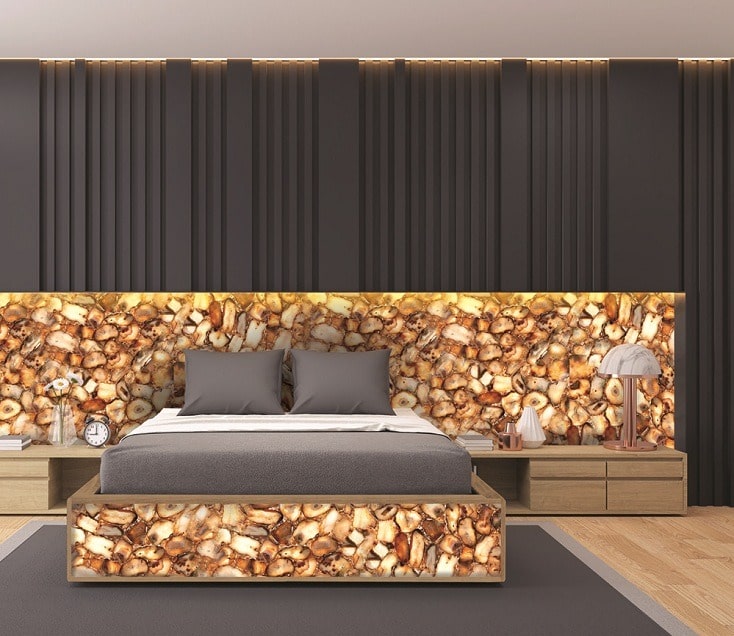- May 16, 2022
- Fusion Gemstones
- 0
Let’s define Semi-precious Slabs:
Minerals, rocks, and biological materials that’ve been cut, polished, and then created into jewellery are known as gemstones. Because of the value disparity at the time, these gemstones were separated into two groups in the 1800s: precious and Semi Precious Slabs. Nowadays, categorization is not always accurate because the “Value” component is not the only criterion used by specialists to assess a stone. The quality, rarity, and provenance must all be taken into account.
Interesting facts about semi-precious slabs
Any gemstone that isn’t one of the four is classified as semi-precious. Some of the more common ones are alexandrite, agate, amethyst, aquamarine, garnet, lapis lazuli, moonstone, opal, pearl, peridot, rose quartz, spinel, tanzanite, tourmaline, turquoise, and zircon. The division among precious and semi-precious metals has no scientific validity.
The division between valuable and semi-precious metals has no scientific validity. Aquamarines and emeralds, for example, are both beryl varieties. Aquamarine is semi-precious, while emerald is rare. This classification was made due to differences in value and rarity between the four gemstones and the remainder. Some semi-precious gemstones are now worth far more than precious stones. Many natural pearls, for example, command extraordinary prices, frequently eclipsing the amount of a low-quality premium diamond, ruby, emerald, or sapphire. Another example is spines. Furthermore, many semi-precious slabs are more uncommon than some valuable stones. Many additional semi-precious gemstones, such as demantoid garnets or tsavorite garnets, are difficult to discover, process, and outcome with manufactured in poorer quality than valuable gemstones.
When buying a gemstone, we don’t get too bothered about whether it’s precious or semi-precious. All gemstones are valuable in the perspective that they are one-of-a-kind if they provide both relevance and accomplishment in a piece of jewellery!

Misunderstandings/ Misconceptions:- Slabs of semi-precious stone are a magnificent addition to any home. However, many people have misconceptions regarding how these exquisite slabs are created.
Slabs of semi-precious stone are all the same:- This could hardly be more untrue. The reasons behind this are straightforward.
The slabs aren’t cut from blocks like stone, marble, or granite, for example.
- Semi-precious stone slabs are composed of a number of small sections/pieces that are mixed in resin and fitted together almost like a gigantic jigsaw puzzle.
While slabs may appear to be similar, this procedure made it difficult for any 2 slabs to be identical.
semi-precious slabs are all the same:- The colour and clarity of the raw materials are critical, as low quality stones and a lack of quality supervision will result in unsatisfactory end results. Cheaper cost will result from lower-quality raw materials or a low stone-to-resin ratio (we’ve seen some examples with less than stone content). Suppliers frequently offer tinted materials in an attempt to simulate more expensive stones, as well as veneered stones fused to glass.
What’s the Best Way to Use Health-Beneficial semi-precious slabs?
Some people use gemstones in their spiritual endeavours. Some belief systems have practitioners lay gemstones on specific regions of the body to facilitate healing. For the majority of people, however, constantly wearing a jewellery set with a specific gem is sufficient.
Some crystal healers utilise gems in their medications or insert gems into their patients’ mouths. In these circumstances, avoid any acid-soluble diamonds, even if they do not contain any known hazardous compounds. Hence, sometimes, these diamonds’ impurities may induce serious reactivity in your stomach acids.
